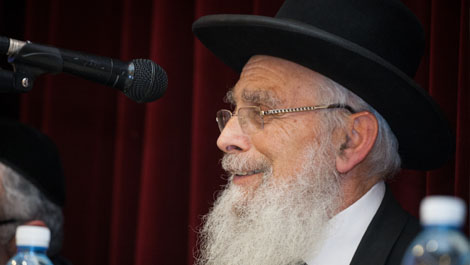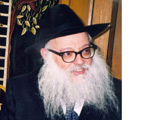Beit Midrash
- Torah Portion and Tanach
- Bamidbar
- Shlach Lecha
- Sections
- Chemdat Yamim
- Parashat Hashavua
Various giants lived in different places in the Land historically and at the time of Moshe. There are nefilim (one of the names for giants) in the Land (which can, although does not have to, refer to Eretz Yisrael) at the time before the flood (Bereishit 6:4). Yehoshua found giants in Chevron but destroyed them (Yehoshua 11:21). We find some on the eastern bank of the Jordan in the story of the four kings and the five kings (Bereishit 14:5). In Sefer Devarim, we find interaction between eimim and refaim and between the Moavites, who lived in present day Jordan (2:10-11). After Yehoshua finished his conquest of Eretz Yisrael, there were giants remaining only in the Plishti areas of Azza, Gat, and Ashdod (Yehoshua 11:22). These were killed at the time of Shaul and David. While Goliat, who was killed at the hands of David, was the most famous of them (Shmuel I, 17:4,50), later sections of Shmuel (II, 21:16-22) describe the demise of others at the hands of David’s servants and relatives.
In the listing of geographic locations of the Tribe of Yehuda, we learn of the following border location: "The border went to the Valley of Ben Hinom to the shoulder of the Yevusites to the south – this is Yerushalayim. The border went to the top of the mountain which overlooks the Valley of Hinom to the west, which is the edge of the Valley of Refaim to the north" (Yehoshua 15:8). The border went from the Valley of Ben Hinom, from its convergence with the Kidron Stream (near the City of David) in the direction of the top of the mountain (the place where Montefiore’s windmill was built), to the west of Gei Ben Hinom, and north of the edge of the Refaim Stream (where the old first train station was). Thus, the place that we now call Emek Refaim is the place that is mentioned in Sefer Yehoshua. As the Refaim Stream moves westward toward the Mediterranean Sea, it flows into the Soreq Stream, which spills into the Sea in the area of the Plishtim (between Ashdod and Azza). Since roads are usually built in wadis along rivers and streams, the road that led from the Plishtim to Jerusalem ended at Emek Refaim, and thus the attacking Refaim would have come from there to terrify and endanger the inhabitants of Yerushalayim.
How fortunate are we that in the same place that the giants of all different types and names endangered the people, we witness great blessing: "It will still happen that old men and women will sit in the streets of Jerusalem and a man will hold a walking stick due to advanced age. The streets of the city will be full of young boys and girls playing in its streets" (Zecharia 8:4-5).

What is seen?!
Parashat Shelach
Rabbi James I. Gordon | Sivan 5763
SHLACH
Rabbi Berel Wein zt"l | 15 Adar II 5784

Finding Unappreciated Treasures
Parashat Shelach
Rabbi Yossef Carmel | 13 Sivan 5764





















